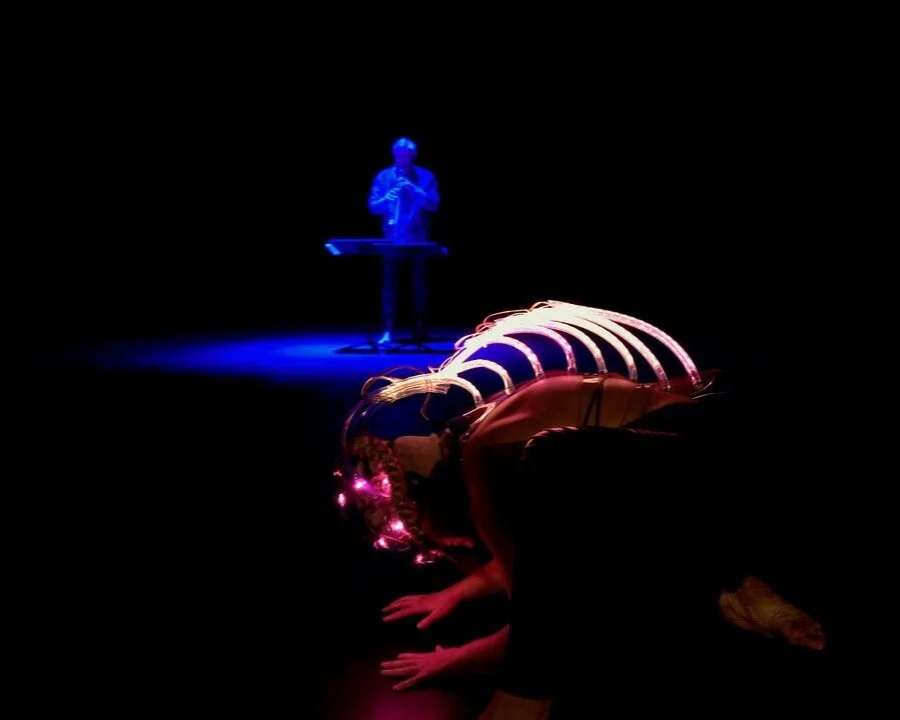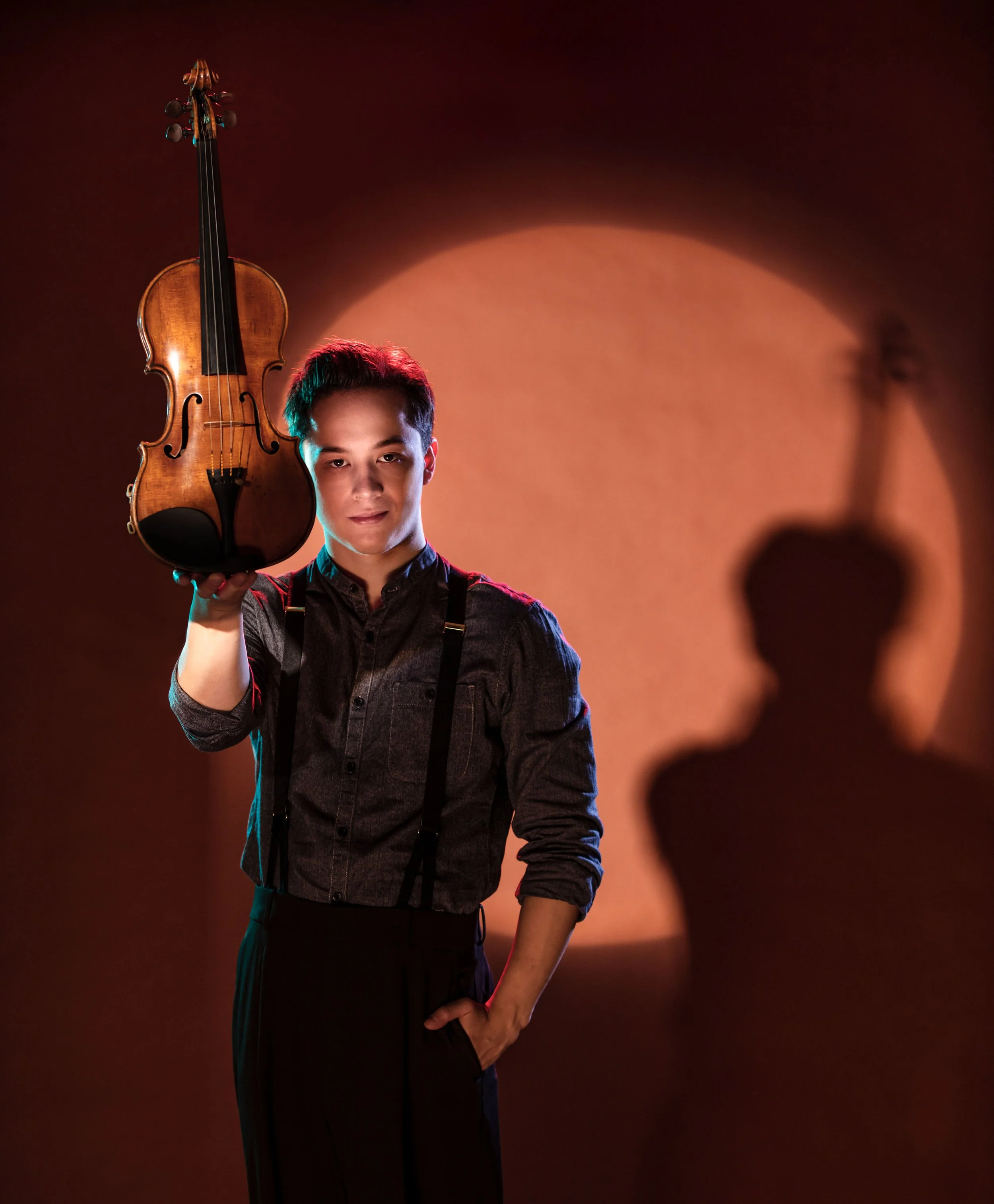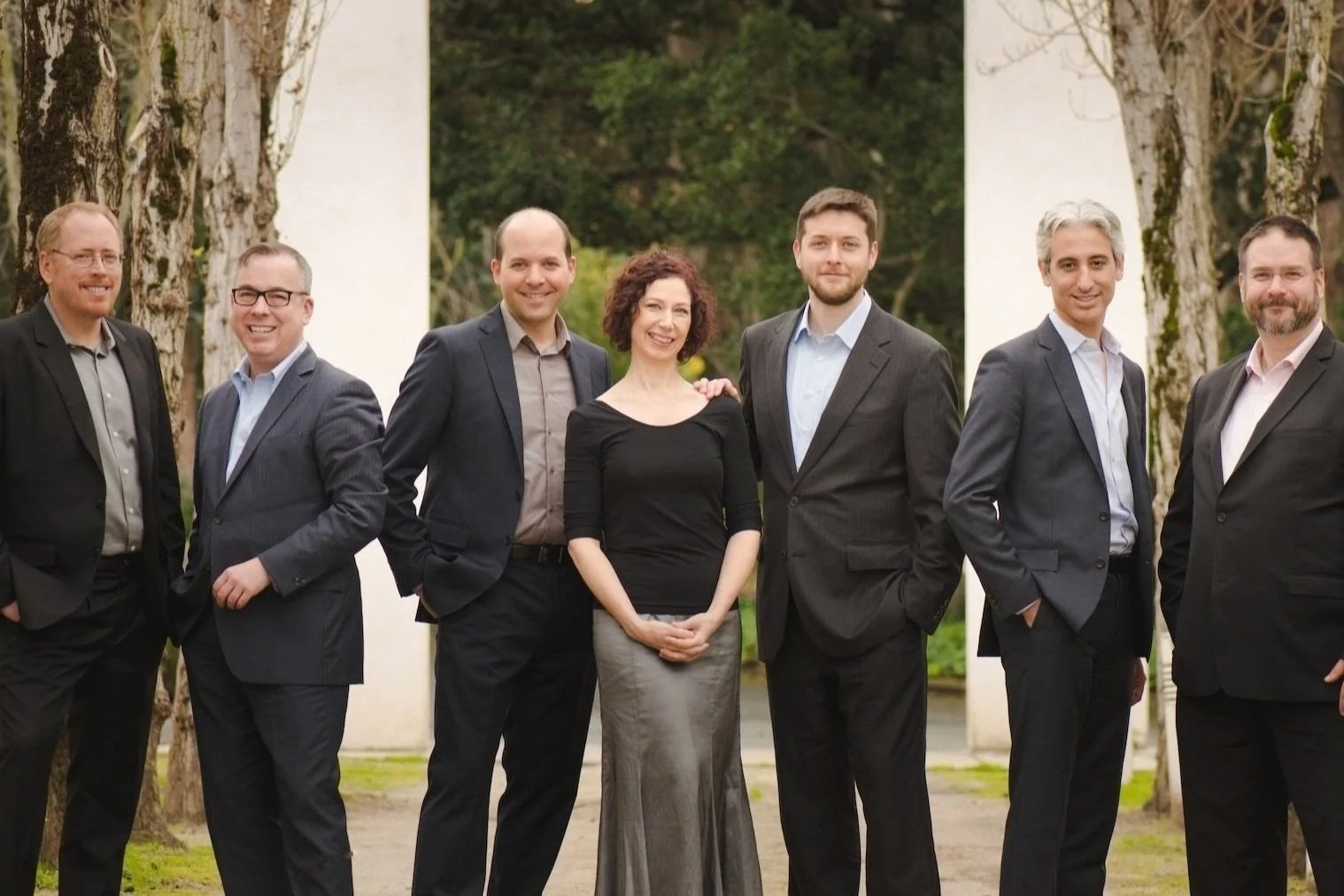Turning Point Ensemble's 1+1+1+... pairs filmmakers, musicians, and others in new approach to online performance
An oboist meets a dancer with an LED spine, a violinist plays in black and white, and more
Synapses, with oboist David Owen and dancer Emmalena Fredriksson wearing an LED “spine”. Still by filmmaker Sean Patrick Shaul
Turning Point Ensemble streams the first three films from 1+1+1+… on January 23 at 5 pm
IN THE NEW black-and-white short film Cone, Turning Point Ensemble member Mary Sokol Brown walks into an empty hall and opens up her violin case to start playing. Inside it, you see the photos of her family that she keeps there.
It’s just one example of the ways that the new-music group’s pandemic-era solo-film series 1+1+1+… lets you get to know its musicians in new ways.
“I never talked to her about it before, but I always felt it was a door opening into her life in a more intimate way,” Turning Point artistic director Owen Underhill says of the violinist, who plays his composition in Cone, and her case’s photos. “A lot of musicians might have stickers from their tours or something else like that on their case, but hers was just so personal. So I did feel like the film should open that way.”
In each of the three films debuting January 23, out of a total of 15 to be released this season, a musician from the ensemble has chosen a composer and worked with a filmmaker to create a distinct work.
The 1+1+1+… project finds Turning Point, a group known for innovation and cross-disciplinary collaboration, working in new ways during the socially distanced pandemic—a time when it can’t gather as an ensemble. And it’s an initiative that contrasts the livestreamed concerts happening elsewhere on the internet over the past year.
“There’s a lot of video documentation of performance, and that’s great that that’s available, but it’s quite different than designing the work from the beginning, including the filmmaker from the start,” says Underhill. “This isn’t a documentation of a performance.
“We’re learning something new by doing this,” he adds. “We want to find ways to put our musicians with other art forms, but where the music is the prime component.”
The diversity of the first three five-minute films in the series speaks to the creative possibilities of the project. In each case, composers reflect this uncertain, isolated time in unique ways.
Oboist David Owen chose to collaborate on a new piece with Bob Pritchard, who also plays the oboe as well as specializing in electroacoustic music. Synapses is Pritchard’s new composition for solo oboe and Max/MSP processing, with dance artist Emmalena Fredriksson performing in an eerily glowing LED “spine” (see photo at top).
“The oboist and the dancer are kind of interacting as the piece progresses,” Underhill says. “That one is much more theatrical and is a kind of play on sound and movement and light, and how they all can interact.” Their relationship gradually builds in intensity until it hits a breaking point.
Elsewhere on Saturday’s program, Shared Solitude, filmed at the Annex, blends bassoon, piano, and footwork. Written by Réjean Marois, it’s about “being alone without a sense of loneliness”, according to the composer’s artistic statement. It’s the perfect combination of skills for Turning Point bassoonist Ingrid Chiang, says Underhill.
“She’s a very versatile musician,” he says. “She has, from time to time, played keyboard for us because she is quite a good pianist, and when we have done multiple-percussion pieces, she’s done that on occasion too.
“She said she had this idea that she could play the bassoon and the piano at the same time to do something fun,” he adds. “Her response was to step out and do something different and demonstrate her unique spirit and skills. Réjean embraced it and introduced this idea of her tapping feet. So it’s like she’s a one-woman band!"
Mary Sokol Brown plays the violin in Owen Underhill’s Cone. Still by Sean Patrick Shaul
Underhill’s Cone is the only work of the trio to be shot in black-and-white, an idea he attributes to Sokol. “I thought it was great because it was unfocused and unvarnished in a way,” he says of the intimate work.
For Underhill, Cone captures his own experience of isolation—and its emotional swings.
“I find that you’re a lot more isolated and your individual experiences might be heightened much more—the highs and the lows of dealing with the situation,” Underhill reflects. “There’s some very strong violin playing and yet the overall character of the piece is contemplative.”
Of the title, he says, “I almost imagined it as we’re in an individual cone of life. It kind of expresses our isolation and focus.”
That tightly enclosed environment—that cone of direct artistic communication—might be an apt description for the entire project.
Just how these unique, interdisciplinary films play out in future installments remains to be seen. What is clear is that the films will form a legacy—and prove that one artist plus one artist plus one artist can add up to much more than the simple sum of the parts—and form an artistic time capsule of this strange time.
“We're just going project by project by project, so the hope is that by the end, they could compete in a film festival or show on a TV channel or something,” Underhill says. "We hope that it will have a life as a collection."
Find tickets and information for 1+1+1+… here.














